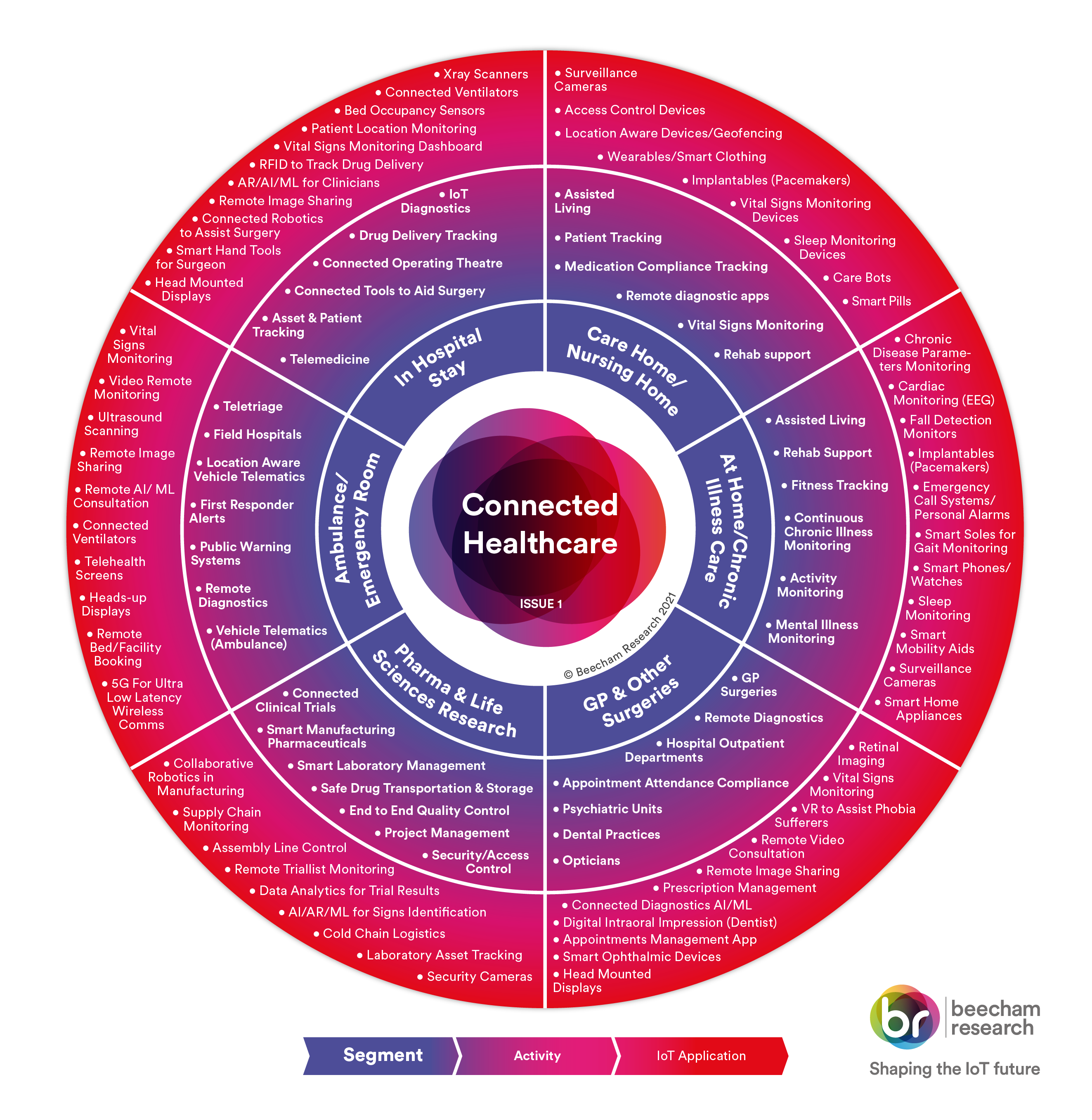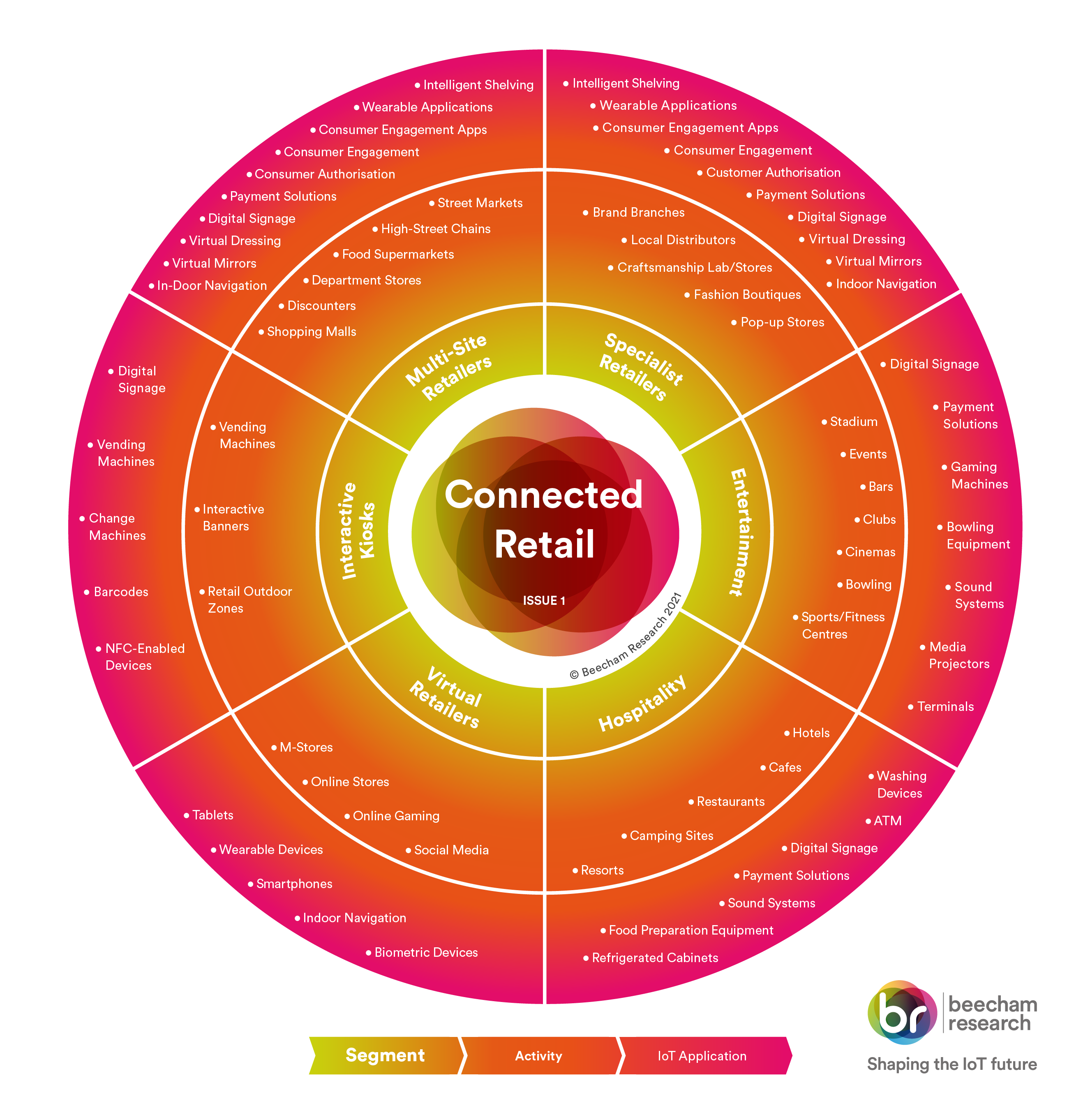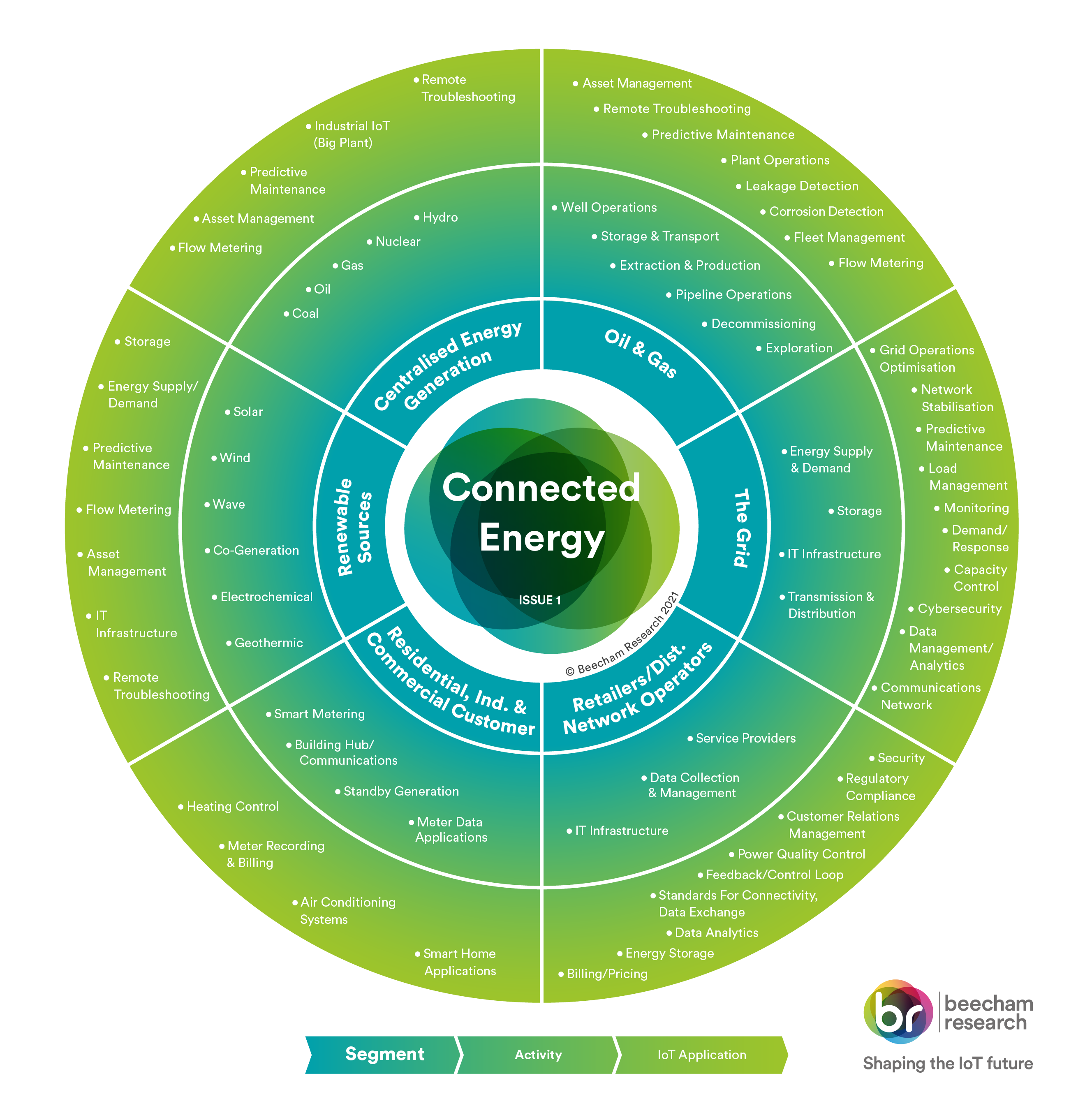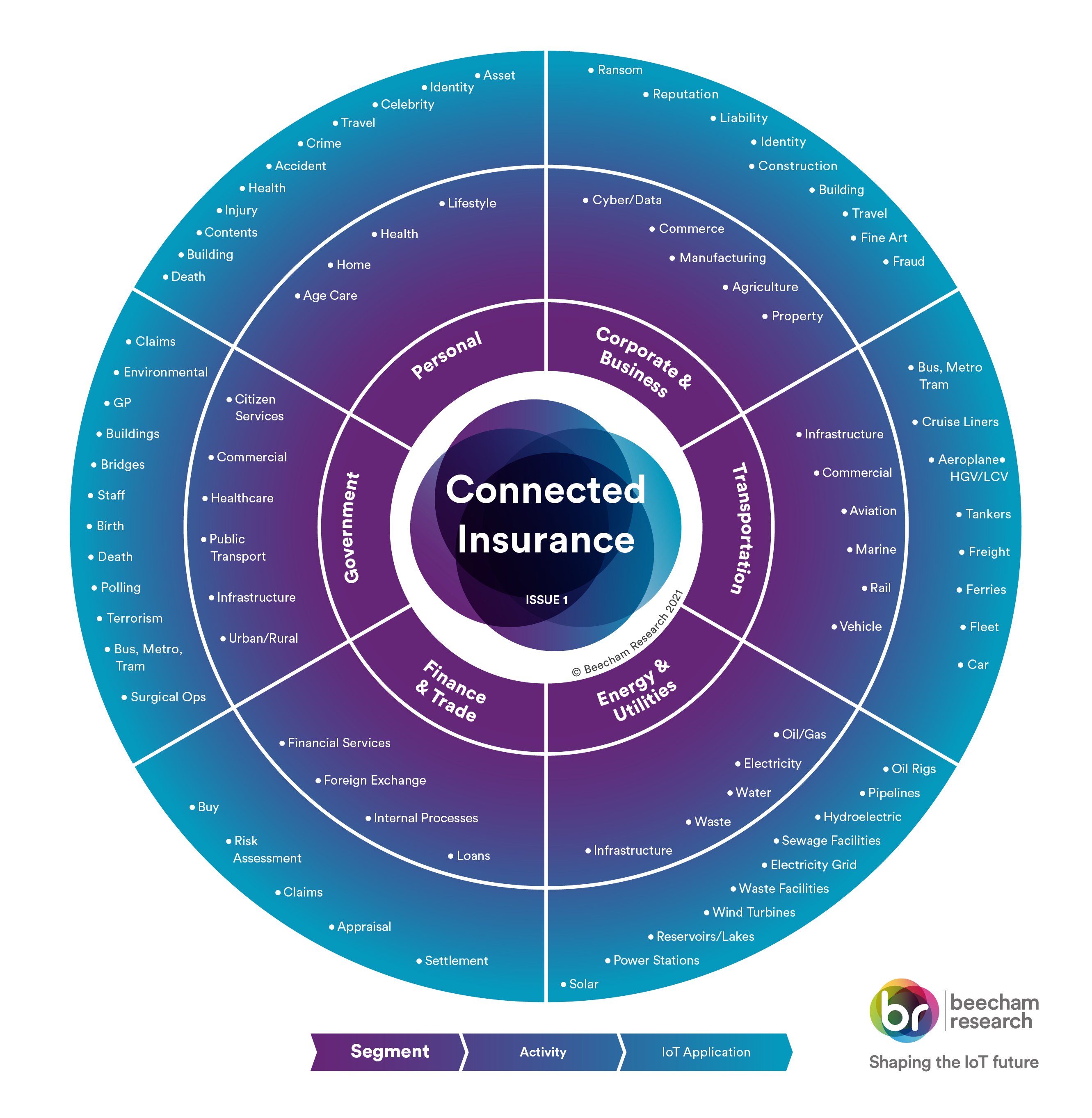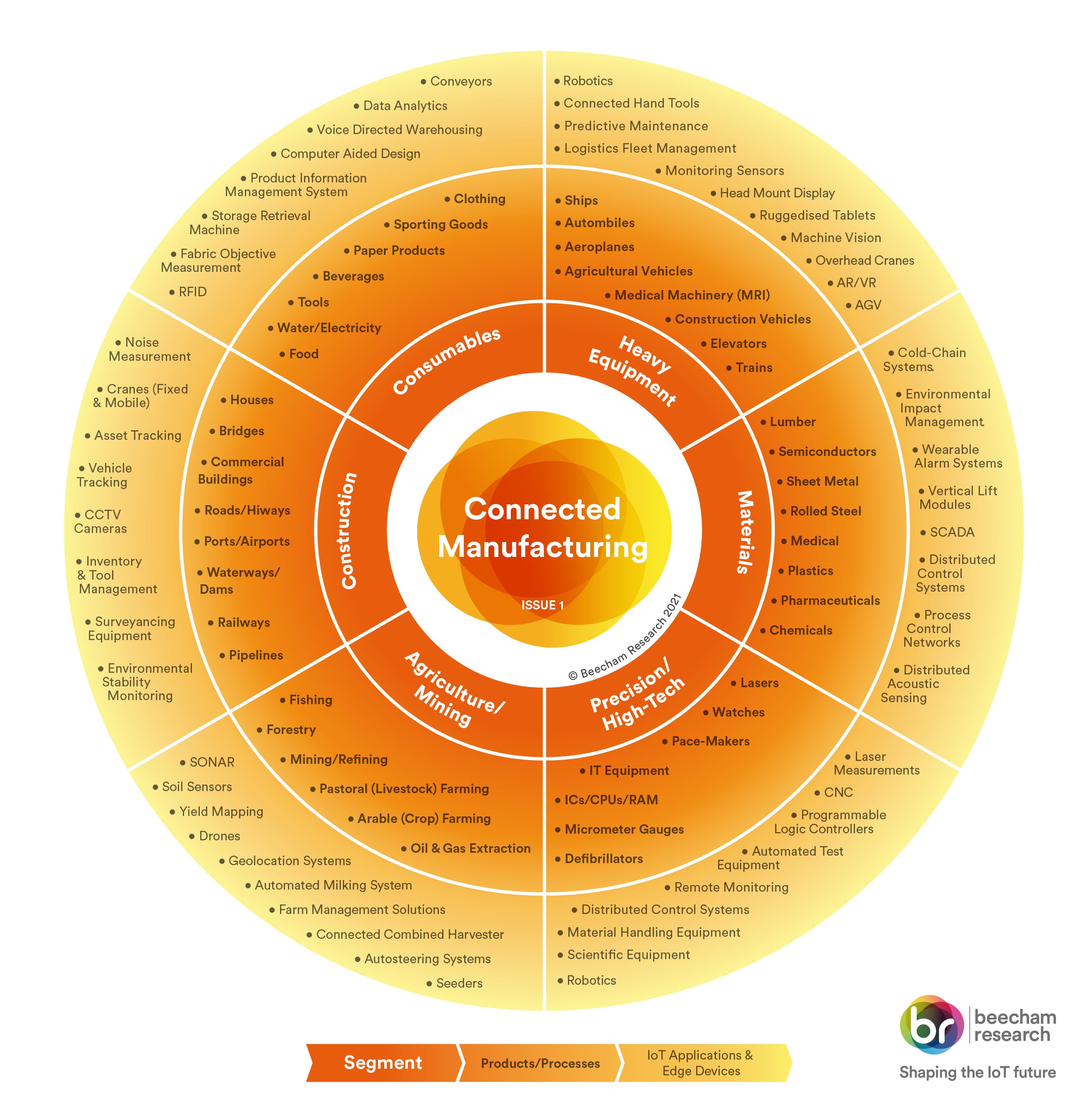World of IoT Sector Map
Our World of IoT Sector Map, first introduced in 2008, has been translated into many languages worldwide as a reference document. Now updated for the market today, it shows the 9 key business sectors where IoT applications abound, the application groups and application types within those sectors, and the devices – or ‘Things’ – typically connected at the network edge through which IoT services are offered to the market.
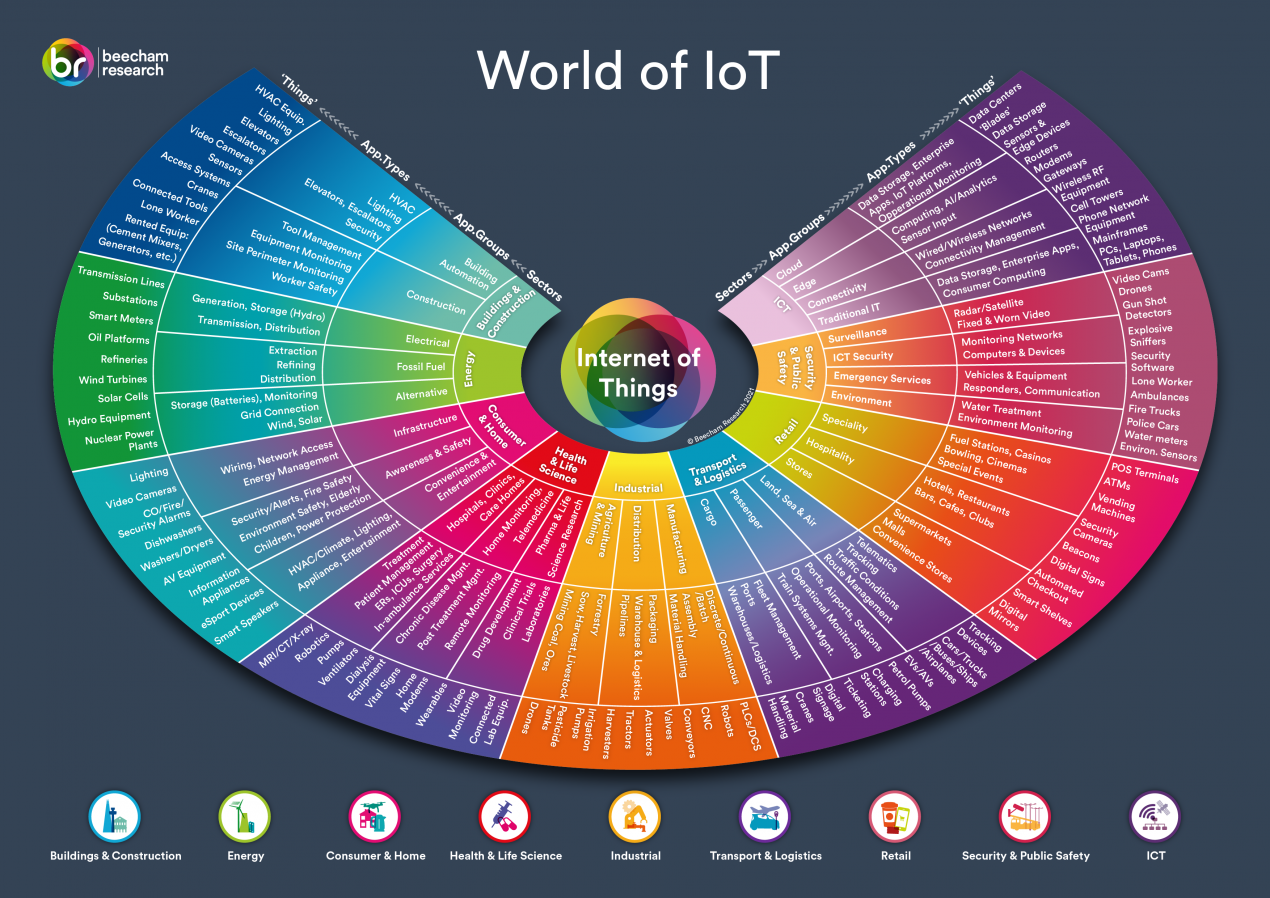
The map shows well over 100 different types of things connected in 9 sectors, and these are just examples. The true number of different types of things now connected is many times greater and this will grow even faster in the next few years as new enabling technologies are introduced to connect an ever-wider range of things with very different connectivity needs.
To take an example in the map, the Transport & Logistics sector has 3 main application groups:
- Land, Sea and Air
- Passenger
- Cargo
Taking the first of these, Land, Sea and Air is then comprised of 3 key application types:
- Telematics & Tracking
- Traffic conditions monitoring
- Train systems management.
The connected ‘Things’ at the outer edge, through which IoT services are delivered, include: connected vehicles, trucks, buses, ships, airplanes, trains; tracking devices attached to movable items, digital signage for highways and premises such as ports which need to be updated regularly; electric vehicles and their charging stations that record and transmit data for a range of necessary core management and control functions, billing, fault and maintenance management; connected autonomous vehicles or driverless vehicles which utilise new technologies including computer vision for collision avoidance; smart ticketing systems for passengers.
In contrast, another example in the map is the Health & Life Science sector, which also has 3 main application groups:
- Hospitals, clinics, care homes
- Home monitoring, Telemedicine
- Pharma and Life Sciences research
Taking the first of these, Hospitals, clinics, care homes is then comprised of 6 key application types:
- Treatment
- Patient Management
- Electronic Records
- Intensive Care Units
- Surgeries
- In-Ambulance services
The connected ‘Things’ at the outer edge include: robotics to aid surgery, connected ventilators to allow nurses to watch patients while at safe distance; connected vital signs measuring equipment, connected wearables outside the hospital, remote video monitoring to monitor patients in rehab; connected laboratory equipment to enable remote monitoring and automatic data collection to ensure against failure of that equipment. Connected laboratory equipment for ensuring it is in good working order and predicting breakdowns.
The map is used in a wide range of planning activities associated with IoT.

